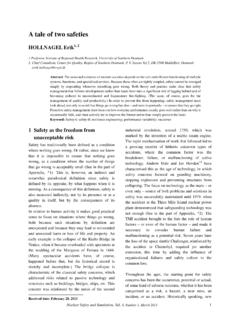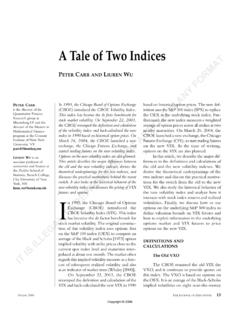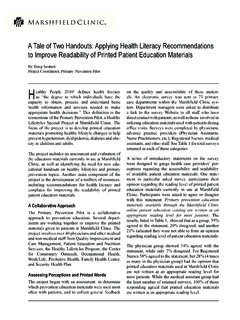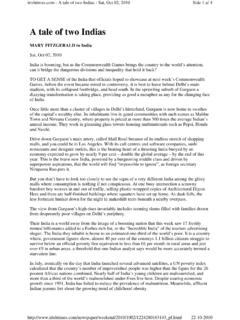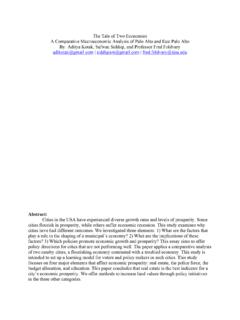Transcription of A TALE OF TWO FLEETS - scholar.harvard.edu
1 a tale of two FLEETS . A Russian Perspective on the 1973 Naval Standoff in the Mediterranean Lyle J. Goldstein and Yuri M. Zhukov S lightly more than three decades have passed since the United States and the Soviet Union confronted the most severe maritime crisis of the Cold War. Oc- curring when the strategic focus of the Navy had been on the Vietnam War for several years, this standoff witnessed the effective exploitation of American political, strategic, and tactical vulnerabilities by an adversary that ten years prior had had virtually no Mediterranean naval pres- Dr. Goldstein is an associate professor in the Strategic ence whatsoever. Indeed, this substantial maritime Research Department of the Naval War College's challenge had emerged from a continental power that Center for Naval Warfare Studies.
2 He earned a in had traditionally focused its naval strategy exclusively politics at Princeton University in 2002. His first book, Preventive Attack and Weapons of Mass Destruction: on coastal defense. A Comparative Historical Study, is forthcoming from In an age when the many battles of the global war Stanford University Press. His scholarly works include (with William S. Murray) a study of the Chinese sub- on terror could distract the Navy from its core marine force in Jonathan D. Pollack, ed., Strategic Sur- mission of sea control, this often forgotten episode of prise? Relations in the Early Twenty-first superpower brinksmanship is a timely reminder that Century. naval threats can emerge rapidly.
3 The Mediterranean Yuri Zhukov is a technical research adviser/translator with Science Applications International Corporation. crisis demonstrates that America's opponents could Since earning a with honors in international rela- achieve local sea-denial capabilities in the face of se- tions at Brown University in Providence, Rhode Is- vere constraints, even in a theater of traditional land, he has conducted research for the Naval War College and the Watson Institute for International naval dominance. Studies at Brown, among other organizations. In examining Soviet maritime strategy in the Medi- The authors published a substantially shorter treatment terranean before and during the October 1973.
4 Of this material in Sea Power (October 2003). Arab-Israeli War, this study draws on new evidence Naval War College Review, Spring 2004, Vol. LVII, No. 2 from Russia made available through cooperation with 28 NAVAL WAR COLLEGE REVIEW. the Central Naval Museum in St. Petersburg, interviews with ex-Soviet naval of- ficers, and newly available Russian memoirs and military journals. These new sources many of which have never before been exploited by Western ana- lysts include an unpublished personal journal of Captain First Rank Yevgenii V. Semenov, one-time chief of staff of the Soviet Fifth Eskadra (the Mediterra- nean squadron). It offers day-by-day accounts of ship movements and firsthand 1.
5 Insight into Soviet strategic thinking. This new evidence paints a picture of a Fifth Eskadra on the verge of direct in- tervention and much more willing to engage in hostilities than previously thought. This work stands in contrast to scholarly works on the topic that have tended to emphasize Soviet restraint and reluctance to exercise force in local 2. conflicts. In addition, this study has empirical value in that most previous un- 3. classified sources have relied almost exclusively on an American viewpoint. Russian perspectives can help us understand the significant challenges faced by a land power in creating and employing an oceangoing fleet. THE CARIBBEAN PARALLEL. The Mediterranean standoff naturally brings to mind its more famous predeces- sor, the 1962 Cuban missile crisis.
6 Whereas, the earlier crisis demonstrated the importance of naval might in enabling both flexibility and political leverage, in the later episode described here the more balanced capabilities of the opposing FLEETS formed a major constraint on decision makers during the crisis, lead- ing to a much more ambiguous outcome. The maritime advantage during the Cuban missile crisis was over- whelming and incontestable. President John F. Kennedy chose the naval block- ade option as opposed to immediate ground invasion, surgical air strikes, further diplomatic pressure, or simple inaction largely because the prospect of a naval confrontation with the Soviets was the opening scenario most favorable to Post-Stalin cutbacks in naval construction had left the Soviet fleet's blue- water ambitions effectively moribund.
7 The Caribbean represented for Soviet captains an unfamiliar area of operation at a prohibitive distance from home ports. Moscow was unable to support or even effectively resupply or reinforce its 5. land-based forces in Cuba from the sea. Soviet merchant ships heading to Ha- vana were generally unescorted; usable naval forces in the region were virtually 6. nonexistent. Four Soviet long-range diesel submarines (of a type known to NATO as the Foxtrot class and to the Soviet Navy as project 641 ) under the com- mand of Captain First Rank Vitalii Agafonov each carrying twenty-two conventional torpedoes and one nuclear-tipped weapon left the Northern GOLDSTEIN & ZHUKOV 29. Fleet on 1 October for a new 7.
8 Base in Havana. They faced the unenviable task of pene- trating a blockade con- ducted by (on average) forty ships, 240 aircraft, and thirty 8. thousand personnel. In ad- dition to this overwhelming force, the Soviet submariners were tackling immense tech- nical and mechanical difficul- ties. Since Soviet nuclear Soviet sailors shake their fists at a P2V Neptune flying over a submerging Soviet submarine in the submarines were at that time Mediterranean. relatively unsafe and untested, 9. older diesel boats were sent in their place. The diesel Foxtrots proved unsuitable for the operation. The boats, especially in that climate, were hot; temperatures inside reached 50 C (122 F), forcing the crew to cool off by sitting neck deep in water.
9 The boats also lacked cooling systems for their batteries, which greatly complicated recharging. The Foxtrots furthermore had to surface often to re- 10. ceive instructions from Moscow and recharge batteries. The noisy engines and regular surfacing made the boats particularly vulnera- ble to antisubmarine warfare (ASW) forces. Land-based hydroacoustic in- stallations discovered the submarines off the Azores, and American aircraft constantly trailed the boats for the rest of the voyage. To escape their shadowers the Foxtrots were forced to dive to depths of over two hundred meters, out of 11. communications with each other or with Moscow. A fifth submarine, the long-range diesel boat B-75 (Zulu class/pr.)
10 611) carry- ing two nuclear torpedoes, was sent to the region at the end of September with orders to defend Soviet transport ships if they came under attack. However, it was recalled shortly after Kennedy announced the blockade. By 10 November, 12. the boat had returned to the USSR. The four Foxtrots never made it to Cuba. Three returned to base after being forced to surface by Navy warships; the last Foxtrot in the region (B-4) received orders to return to its home port of 13. Polyarnyi on 20 November. Although an utter embarrassment for Moscow, the Cuban Crisis taught the Soviet Navy some important lessons with respect to long-range submarine op- erations. The battery-cooling problem on diesel submarines was fixed in fairly short order.












